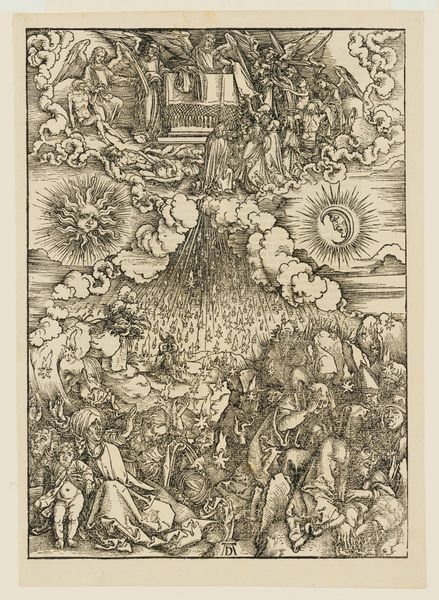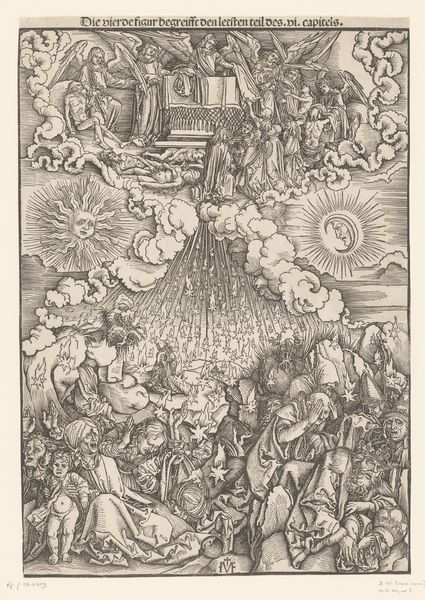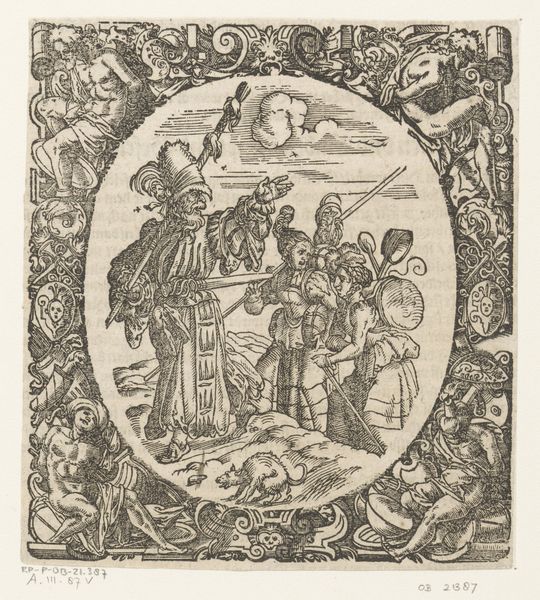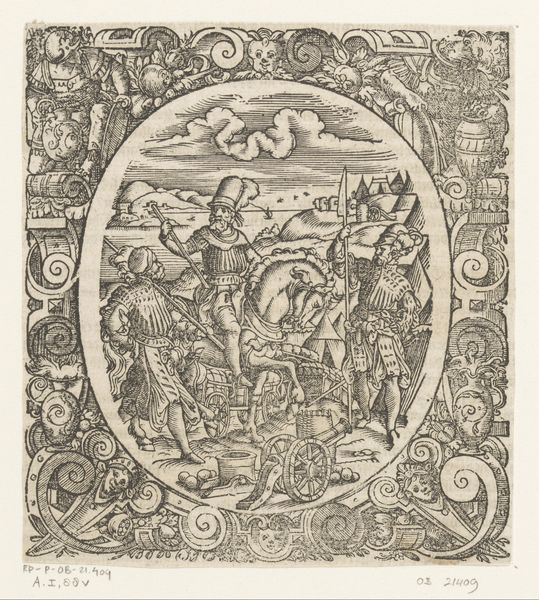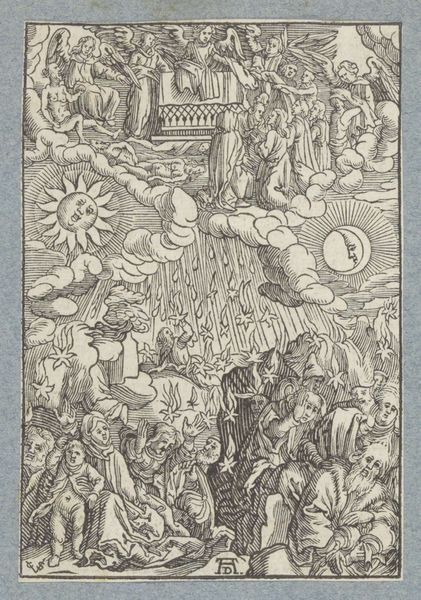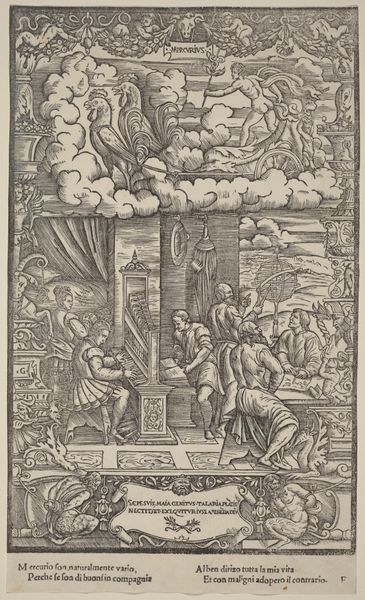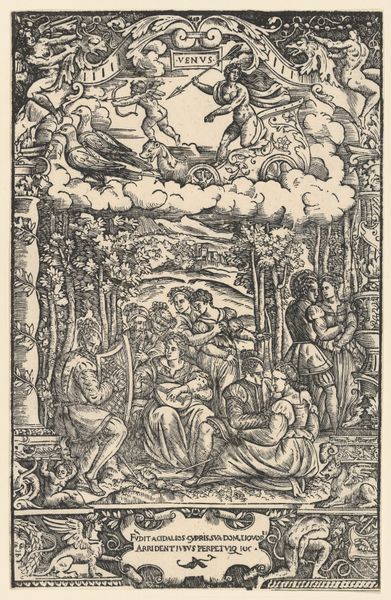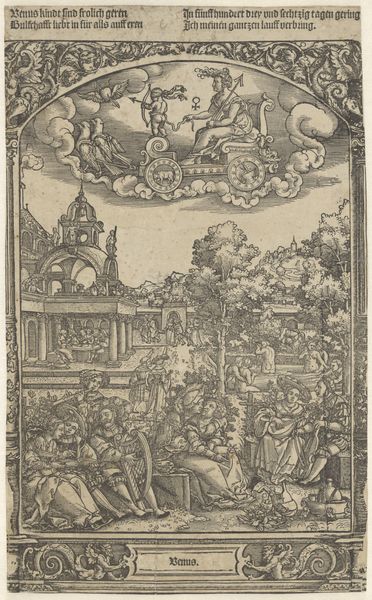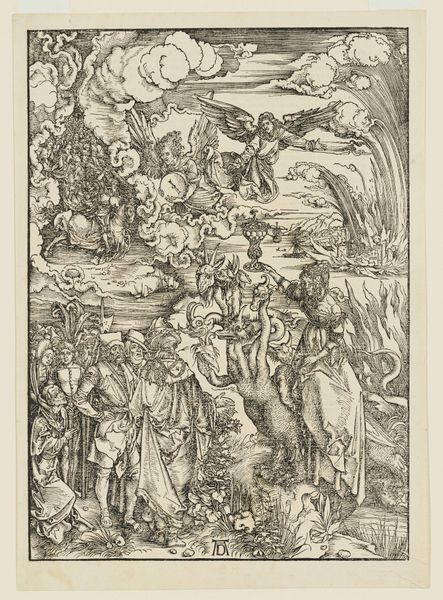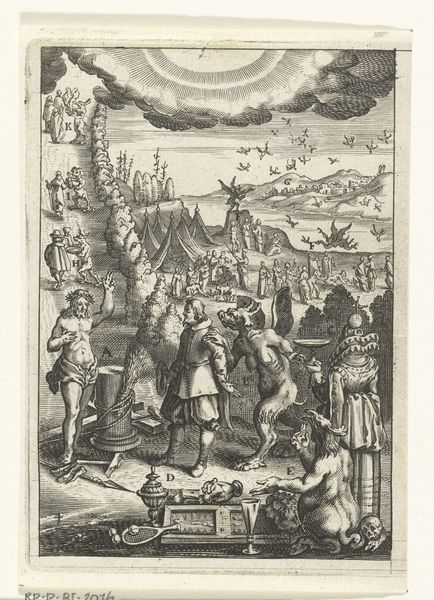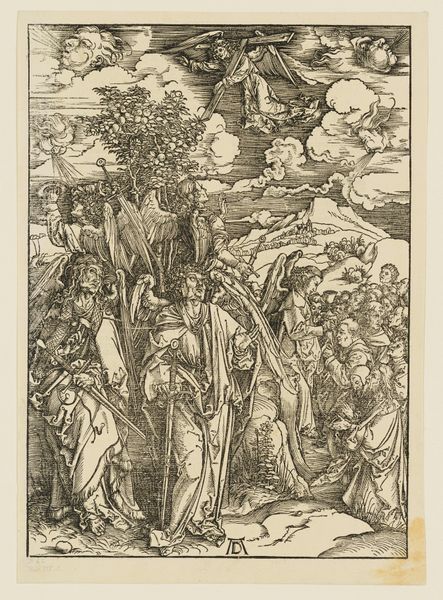
Dedikationsblad med Albrecht V., der knæler for Kristus 1574
0:00
0:00
print, etching, engraving
# print
#
etching
#
figuration
#
11_renaissance
#
history-painting
#
northern-renaissance
#
engraving
Dimensions: 306 mm (height) x 194 mm (width) (bladmål)
Editor: So, this is Balthasar Jenichen’s 1574 engraving, “Dedikationsblad med Albrecht V., der kn\u00e6ler for Kristus,” or in English, “Dedication print with Albrecht V kneeling before Christ." I'm really struck by how detailed the etching is, particularly the architecture and Albrecht's robes. It gives off a very formal and pious mood. What do you see in this piece, focusing on the material and methods of production? Curator: Given the historical and social context, and acknowledging the means of production, this print becomes very interesting. It's not just about Albrecht V’s devotion, but the active construction of his image through reproducible media. Engraving allowed for dissemination; it was about making the image and the message of Albrecht's piety available to a wider audience, potentially consolidating his power and religious authority. How do the specific materials used—the metal plate, the ink, the paper—contribute to this understanding? Editor: It’s interesting to consider the material itself playing a role. The precision of engraving lends a sense of authority, almost like official documentation, versus the more loose appearance of a woodcut, which might indicate an ephemeral work. Would the act of making this print be different from producing a single devotional painting, for instance, in terms of labor and value? Curator: Precisely! It's about understanding the labor invested in producing something reproducible, versus a singular, unique object. Consider the role of the engraver: their skill, the time invested in carving the image. And then think about distribution: where were these prints sold, or gifted? What was their function in everyday life beyond devotional practice? The mass production changes the artistic value because more are distributed compared to paintings in personal chapels and royal settings. Editor: That totally shifts my perspective. I was so focused on Albrecht V's figure, but it's fascinating to think about how this print participates in a larger system of production and distribution, rather than as an isolated image of piety. Curator: Exactly. By investigating these questions about materials, method, labor and distribution, the historical print reveals so much more than surface impressions.
Comments
No comments
Be the first to comment and join the conversation on the ultimate creative platform.
